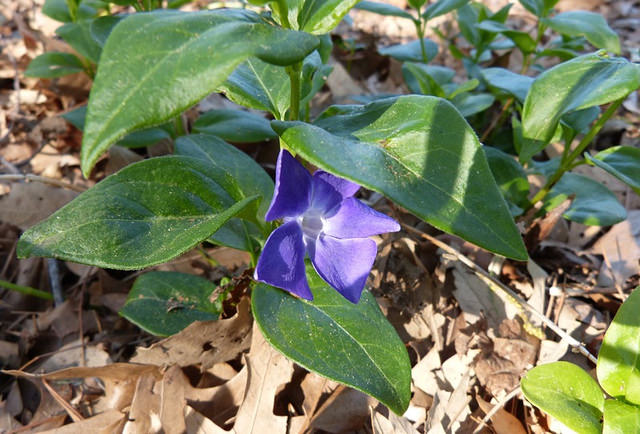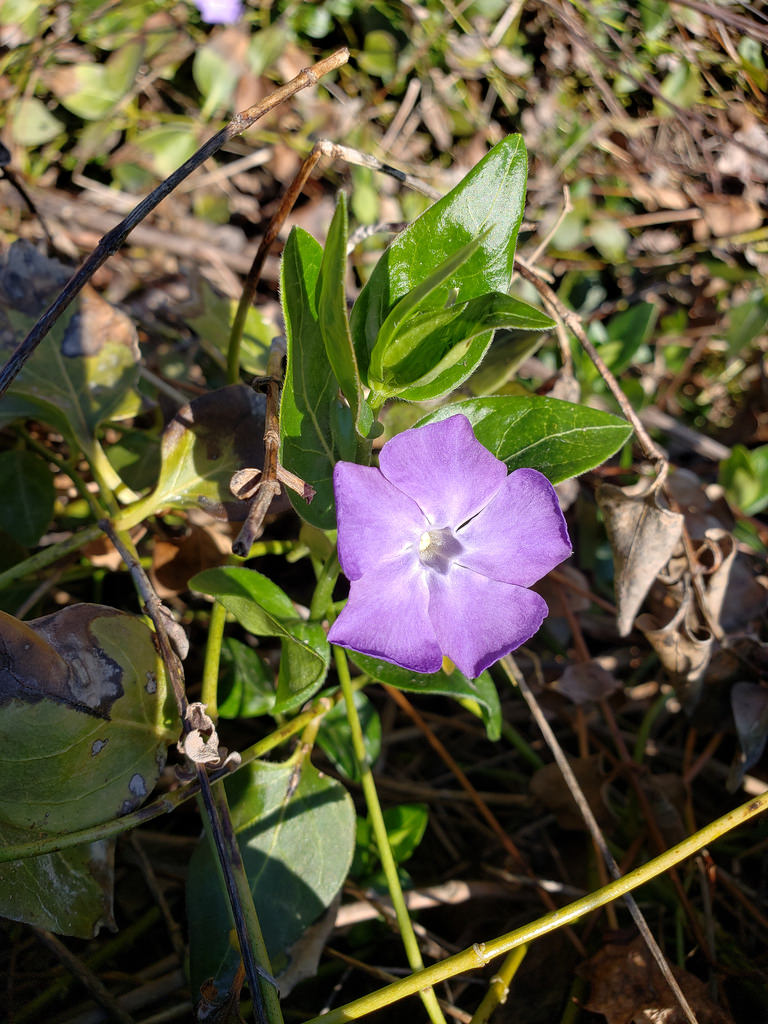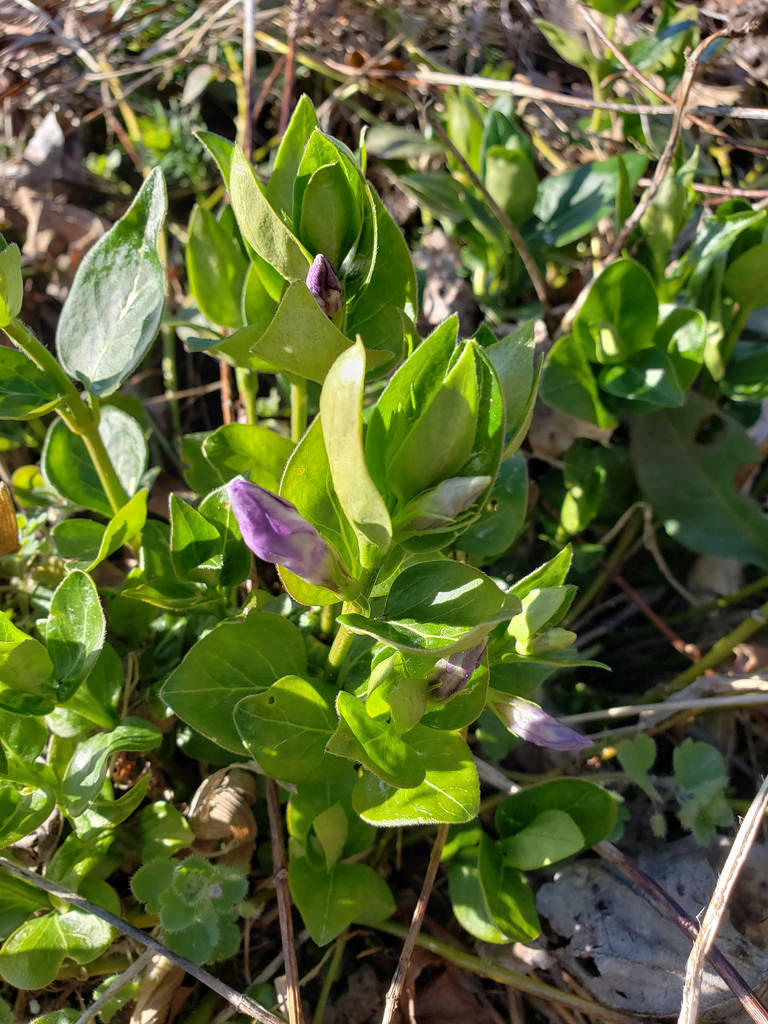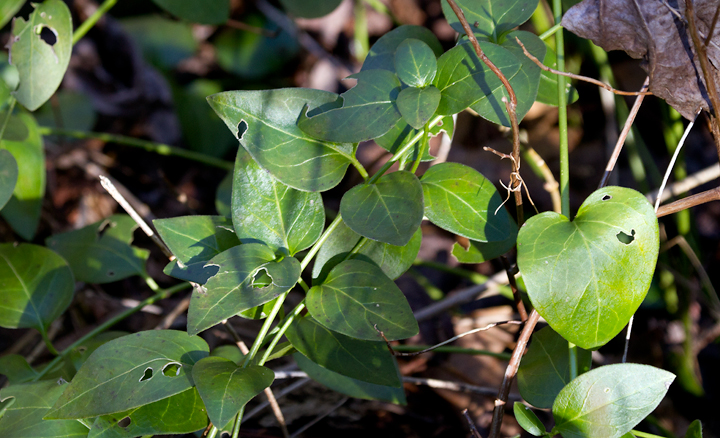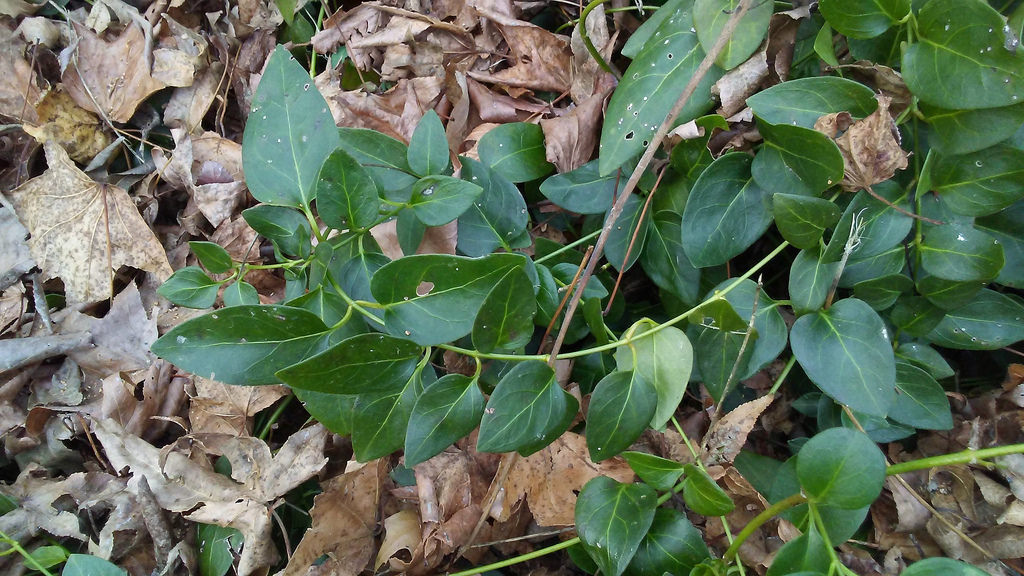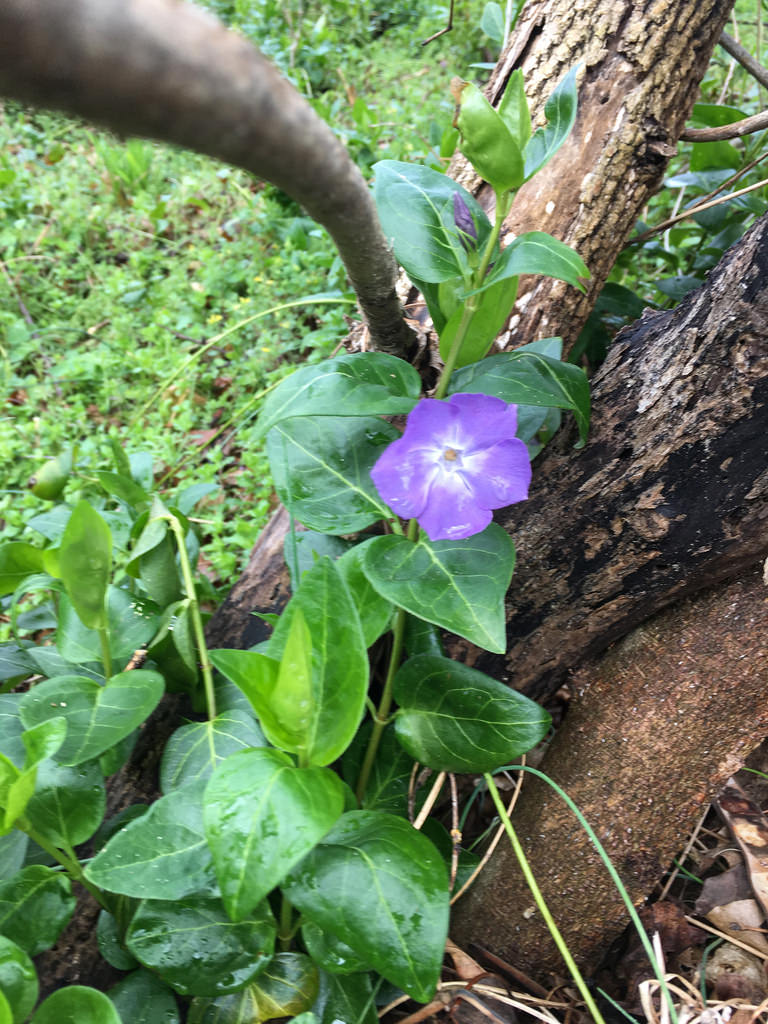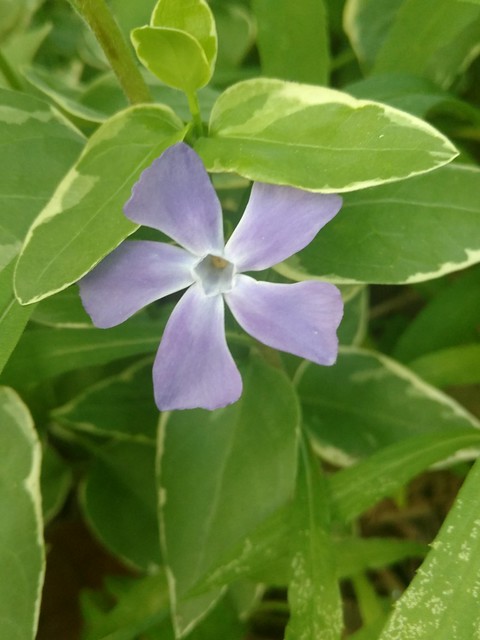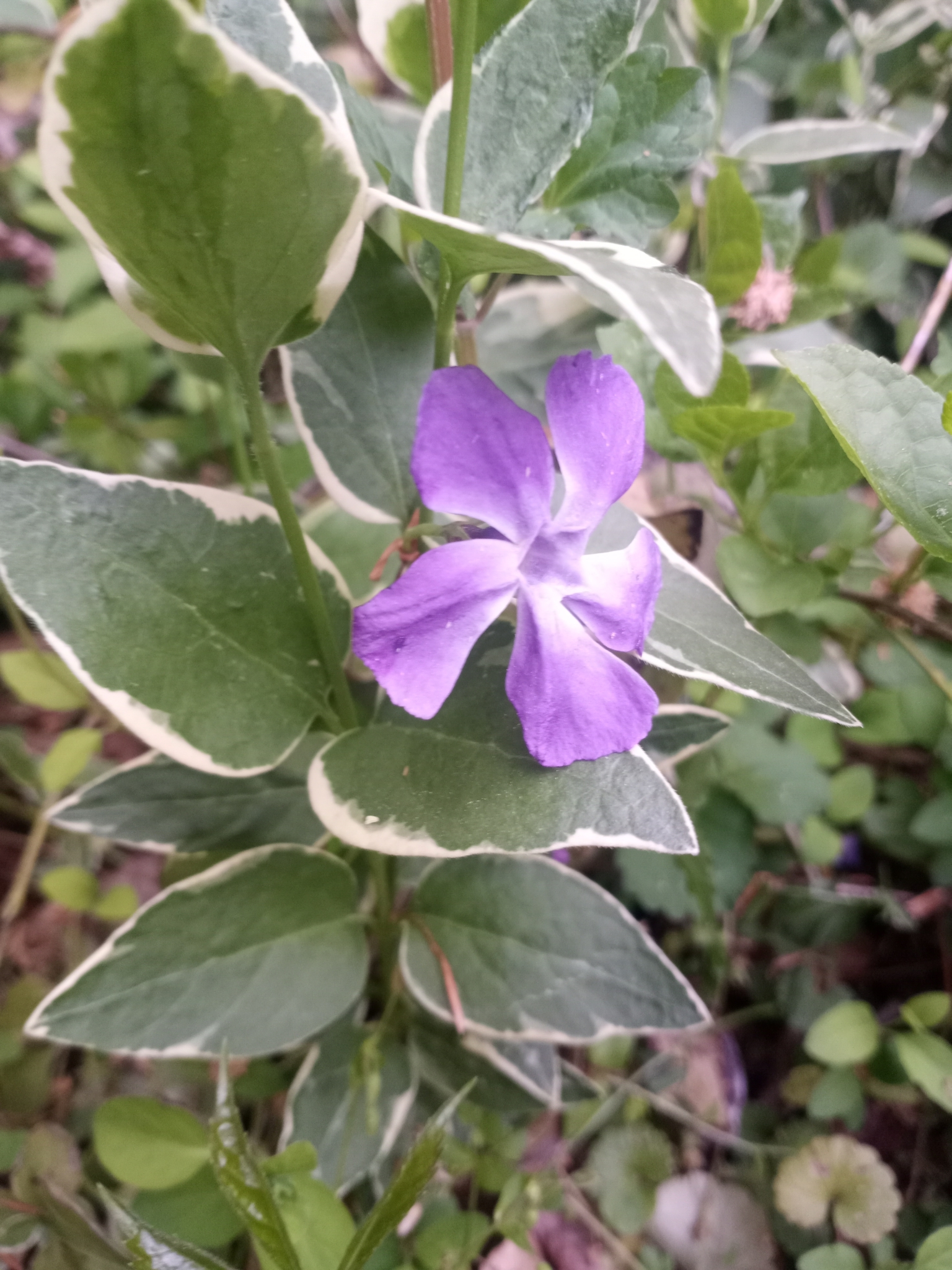Map Snapshot













47 Records
Status
Bigleaf Periwinkle is an invasive ground cover that has escaped cultivation and is spreading in appropriate habitats throughout Maryland. Even though the Maryland Biodiversity Project has not recorded Bigleaf Periwinkle west of the Piedmont, this troublesome plant should be searched for in suitable habitats in the western Maryland. Bigleaf Periwinkle is native to the Mediterranean region and west to the Caucasus of Asia Minor. This plant was introduced to the United States through the cultivation. During the mid 1900s it was used as a ground stabilization plant for steep hillsides. Bigleaf Periwinkle is not as common as the closely related Common Periwinkle (Vinca minor). Both periwinkle species seem to thrive in partially shaded woods and forest edge environments.
Description
With a little practice it is easy to separate the two species of Vinca that have become established in Maryland. First off everything about Bigleaf Periwinkle, from the leaves to the flowers, are larger than the foliage and blooms of Common Periwinkle. The leaves of the two species are noticeably different not just in size but also in shape. The leaves of Bigleaf Periwinkle are broadest towards the base of the leaf. The leaves often have a cordate base but this can vary. The leaves of Common Periwinkle are more lanceolate in structure and are broadest towards the middle of the leaf and they often have a more cuneate base. The flowers of Bigleaf Periwinkle are 3 cm to 5 cm across while the flowers of Common Periwinkle are 2 cm to 3 cm across. The flower pedicels of Bigleaf Periwinkle are longer than Common Periwinkle: 3 cm to 3.5 cm for Bigleaf Periwinkle and 1 cm to 1.5 cm for Common Periwinkle (Weakley, 2015).
Seasonality Snapshot
Source: Wikipedia
| Vinca major | |
|---|---|

| |
| Scientific classification | |
| Kingdom: | Plantae |
| Clade: | Tracheophytes |
| Clade: | Angiosperms |
| Clade: | Eudicots |
| Clade: | Asterids |
| Order: | Gentianales |
| Family: | Apocynaceae |
| Genus: | Vinca |
| Species: | V. major
|
| Binomial name | |
| Vinca major | |
| Synonyms | |
| |
Vinca major, with the common names bigleaf periwinkle, large periwinkle, greater periwinkle and blue periwinkle, is a species of flowering plant in the family Apocynaceae, native to the western Mediterranean. Growing to 25 cm (10 in) tall and spreading indefinitely, it is an evergreen perennial, frequently used in cultivation as groundcover.
Etymology
[edit]The genus name probably derives from the Latin word vincire, meaning snip, as the long creeping vines were used to prepare garlands. The Latin specific epithet major means "larger",[1] in relation to the similar Vinca minor L.
Description
[edit]Vinca major is a trailing vine, spreading along the ground and rooting along the stems to form dense masses of groundcover individually 2–5 m across and scrambling up to 50–70 cm high.
The leaves are opposite, nearly orbicular at the base of the stems and lanceolate at the apex, 3–9 cm long and 2–6 cm broad, glossy dark green with a leathery texture and an entire but distinctly ciliate margin, and a hairy petiole 1–2 cm long.
The flowers are hermaphrodite, axillary and solitary, violet-purple, 3–5 cm diameter, with a five-lobed corolla. The calyx surrounding the base of the flower is 10–17 millimetres (0.39–0.67 in) long with hairy margins. The flowering period extends from early spring to autumn.
Distribution and habitat
[edit]This species is found in southern Europe and northern Africa, from Spain and southern France east to the western Balkans, and also in northeastern Turkey and the western Caucasus. These are also found in lower Himalayan ranges in Asia.
It prefers moist undergrowth, woodlands, hedgerows and banks along the rivers at an altitude of 0–800 metres (0–2,625 ft) above sea level. It grows well in full sun and in deep shade.
Subspecies
[edit]There are two subspecies, with geographically separate ranges:
- Vinca major subsp. major - leaf petioles finely hairy, hairs short (Southern Europe)
- Vinca major subsp. hirsuta (Boiss.) Stearn (syn. V. pubescens d'Urv.) - leaf petioles densely hairy, hairs longer; petals much narrower (Caucasus, northeastern Turkey)
The closely related Vinca minor is similar but smaller, with narrower, hairless leaves.
Cultivation
[edit]Vinca major is a commonly grown ornamental plant in temperate gardens for its evergreen foliage, spring flowers, and groundcover or vine use.
Many cultivars are available, with differences in flowers, such as white to dark violet flowers, and different patterns and colors of variegated foliage. The cultivar 'Variegata' has gained the Royal Horticultural Society's Award of Garden Merit.[2][3]
It contains the following active ingredients: Vinblastine, vincristine, vindesine and vinorelbine are the four compounds so far isolated from this group of plants.
Gallery
[edit]-
Detail of the flower, swelling flower buds and foliage in spring
-
Giant steps periwinkle, a variety of Vinca major
-
A display of the flower of var. oxyloba
-
Note hairy margin of sepals
-
Leaves with ciliate margins and a hairy petiole
-
'Variegata'
Invasive plant species
[edit]Vinca major is an invasive species in temperate parts of the United States, South Africa[4] Australia, and New Zealand. It is especially a common noxious weed 'smothering' native plants and diversity in riparian area and oak woodland habitats of coastal California. It forms dense strands that envelop other plant life and can prevent saplings and shrubs from growing by blocking out the light. Periwinkle moves from place to place, with unintentional human help, in dumped garden waste or as plant fragments carried along in water.[5]
References
[edit]- ^ Harrison, Lorraine (2012). RHS Latin for Gardeners. United Kingdom: Mitchell Beazley. ISBN 978-1845337315.
- ^ "Vinca major 'Variegata'". RHS. Retrieved 5 March 2021.
- ^ "AGM Plants - Ornamental" (PDF). Royal Horticultural Society. July 2017. p. 107. Retrieved 18 February 2019.
- ^ [1] Web page managed by the South African Green Industries Council
- ^ Periwinkle, Aliens Among Us. Virtual Exhibit of the Virtual Museum of Canada.
Bibliography
[edit]- Pignatti S. - Flora d'Italia – Edagricole – 1982, Vol. II, pag. 348
- Flora Europaea: Vinca major distribution
- Blamey, M., & Grey-Wilson, C. (1989). Flora of Britain and Northern Europe. Hodder & Stoughton.
- Huxley, A., ed. (1992). New RHS Dictionary of Gardening 4: 664-665. Macmillan.
External links
[edit]- Vinca major in the CalPhotos photo database, University of California, Berkeley
- "Vinca major". Calflora. Berkeley, California: The Calflora Database.
- "Vinca major". Plants for a Future.
